We at Totum Tech have one dear mandate and mission, among many. We work to raise awareness about invisible disabilities. Not only we offer solutions to help people who live with invisible disabilities, like ourselves, but we talk about them.
It’s estimated that 10% of the world’s population lives with one or more kinds of non-visible impairment, and this fact may be mostly unknown to the remaining 90%.
This post is the transcription of a talk that I, Julia, CEO at Totum Tech, presented at Startupfest, in Montreal, Canada, on July 9th, 2019. On this occasion, I participated in Ignite Startupfest Session, where each presenter follows the format of 5-minute talk, illustrated by 20 slides that change automatically every 15 seconds.
Have you heard about invisible disabilities? Too present, yet unknown…
Hello, I’m Julia, CEO & co-founder of Totum Tech.
My company designs and offers wearable devices and software to help people with invisible disabilities.
But I’m not here to talk about my company.
A quick warning: there will be a lot of cats…

They are not visible
But wait? Invisible disabilities? What does it mean? It’s as plain as the name: they are much present among us, but we cannot notice at first sight.

1 in each 10
It may be surprising to you, but it’s likely that 1 on each 10 of us has some impairment that the remaining 9 cannot perceive right away.

Chronic diseases
The invisible disabilities also called hidden disabilities, are mostly caused or linked to equally invisible chronic diseases, either from birth or acquired later in life.

Syndromes and troubles
They include a plethora of syndromes and troubles but are classified in main 4 groups following the nature of the impairment: cognitive, auditory, visual, and motor.

Myriad of symptoms
Regardless of the conditions, they don’t have a cure; there might have an overlap of diseases and a myriad of symptoms, which raise the disbelief across health practitioners.

Disregard
Believe it or not, many physicians are not properly prepared to deal with those conditions.
“It’s stress” or “You should exercise more” are often the first diagnosis.

Disbelief
In addition, it’s common that people who live with it face resistance and lack of understanding from their families or friends.
Usually, we don’t believe in what we cannot see.

You don’t look sick
Some hear “you’re a drama queen/king”; others hear “you always want to call attention”, or even “you’re too lazy“.
Simply because they do not look like a sick person.

I’m fine, thanks
So, one day they decide to talk no more, from where came a well-known expression among patients:
“I’m not pretending to be sick, I’m pretending to look fine”.

Emotions and symptoms
However the days of such a person are barely fine again; they may become a roller coaster of conflicting emotions, feelings and symptoms.

Unpredictable pain
Many conditions cause ongoing pain and fatigue, which levels fluctuate frequently and can increase a lot from time to time and this is completely unpredictable.

Mental health
Lack of control over what can happen, and when, causes or worsens mental health problems, especially anxiety or depression.
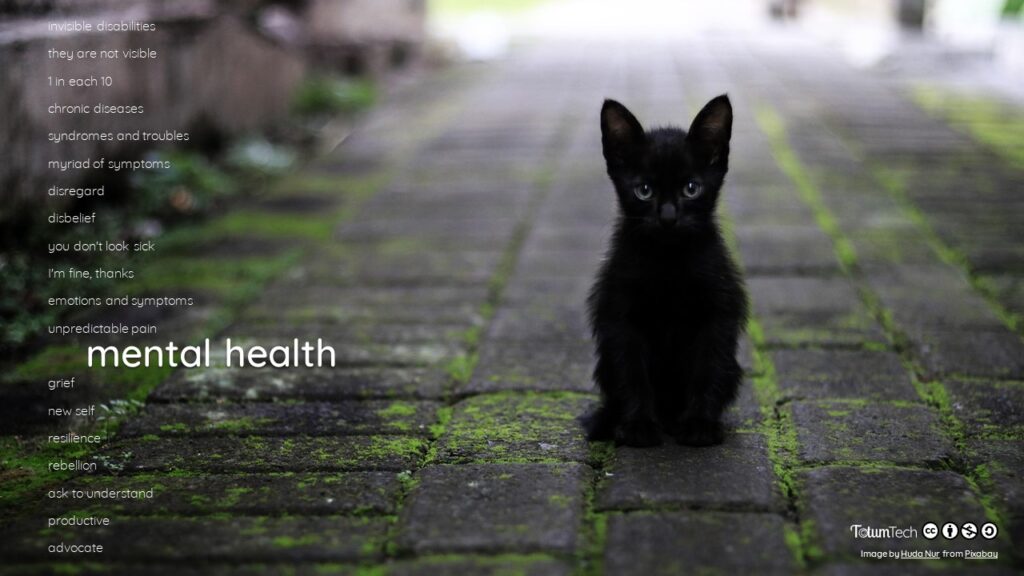
Grief
In the aftermath of the “bomb”, the moment they know of a diagnosis, it is common that the people concerned live a period like grief.
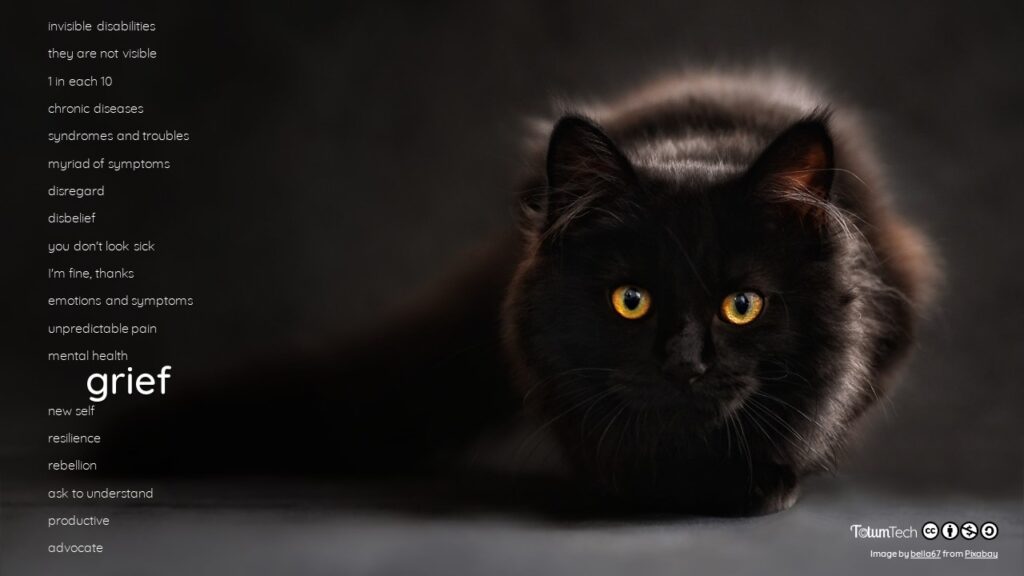
New self
An intimate and solitary grief; mourning for the self from before; an identity that we remember well, but that we do not recognize or do not have anymore.

Resilience
Some recover more positively; they find in resilience the strength and courage to rebuild themselves as a person, to accept and relearn how to live with their new self.
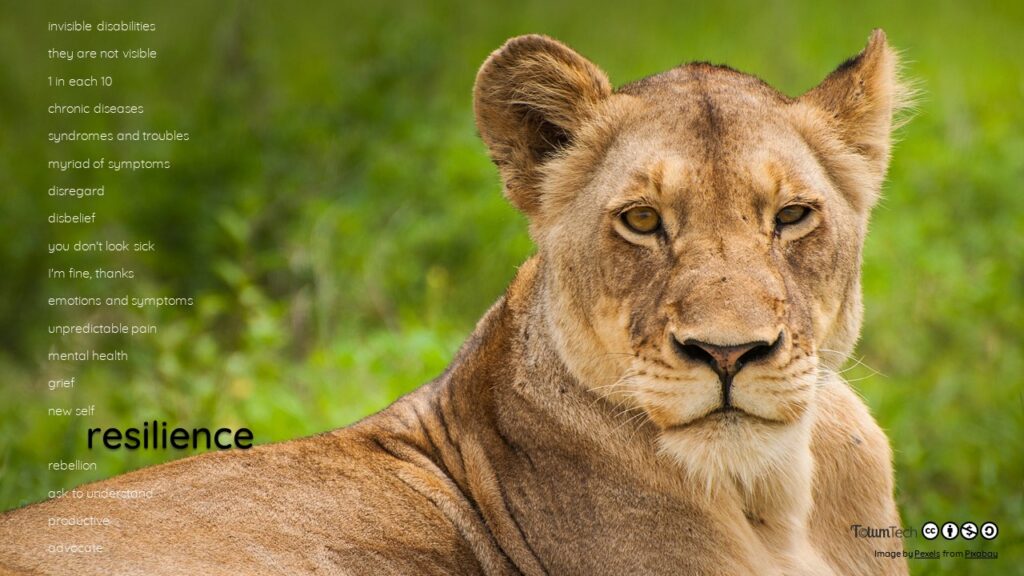
Rebellion
Many, however, cannot rebuild themselves; these people live in a state of little to none self-esteem, lack of hope in the future and internal rebellion.

Ask to understand
If you know who has or think someone you know may have an invisible disability, do not assume that you understand the needs of all individuals with disabilities; ask him/her/them instead.
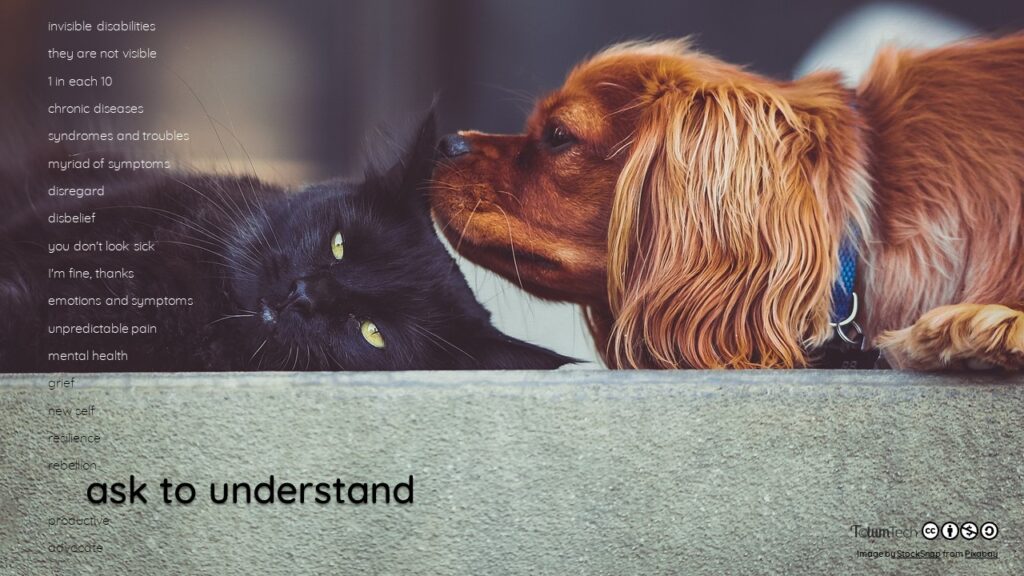
Productive
If you have a colleague at work, consider that she/he/they is/are as capable as you, and accommodations are not a privilege; they want/need to be as productive as you.

Advocate
Most important, believe in friends or colleagues when they say they can not do things or activities that seem simple.
Be an advocate and raise awareness with us.
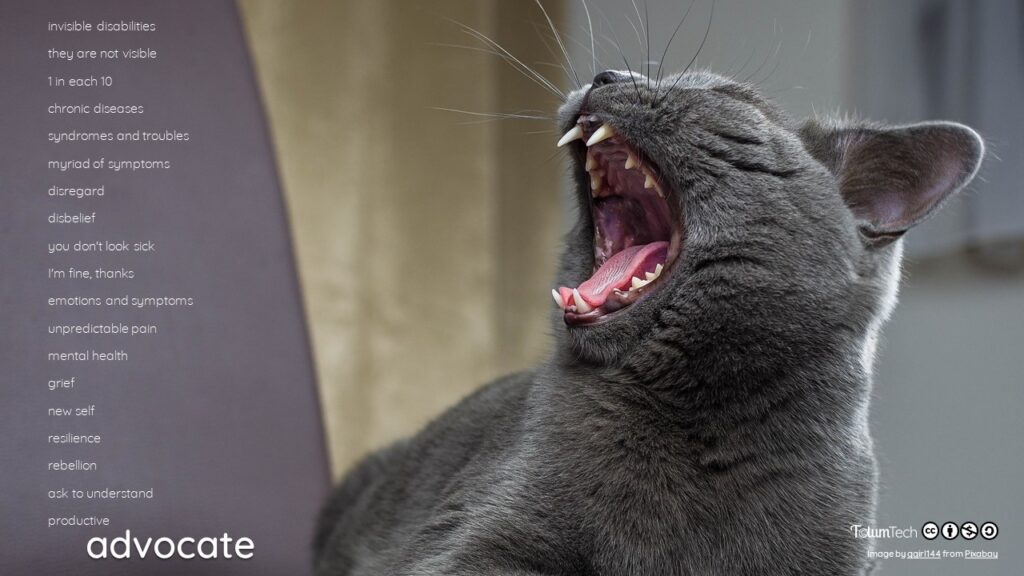
Thank you!
Join us and share your thoughts! If you want to share this presentation, email us at contact@totumtech.com and request a full PDF document.


![Picture of a young person holding and cherishing a cat, Photo d'une jeune personne tenant et chérissant un chat[:]](https://totumtech.com/wp-content/uploads/2019/08/kat-163341_1920-e1564945543349.jpg)

